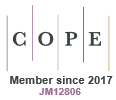Do Australian sexual health clinics have the capacity to meet demand? A mixed methods survey of directors of sexual health clinics in Australia
Christopher K. Fairley A B * , Jason J. Ong A B C , Lei Zhang
A B * , Jason J. Ong A B C , Lei Zhang  A B , Rick Varma
A B , Rick Varma  D , Louise Owen E , Darren B. Russell F G H , Sarah J. Martin
D , Louise Owen E , Darren B. Russell F G H , Sarah J. Martin  I J , Joseph Cotter K , Caroline Thng
I J , Joseph Cotter K , Caroline Thng  L , Nathan Ryder
L , Nathan Ryder  M N , Eric P. F. Chow
M N , Eric P. F. Chow  A B O # , Tiffany R. Phillips
A B O # , Tiffany R. Phillips  A B # and
A B # and A
B
C
D
E
F
G
H
I
J
K
L
M
N
O
# These authors contributed equally to this work
Handling Editor: Matthew Hogben
Abstract
The study describes the capacity of publicly funded sexual health clinics in Australia and explores the challenges they face.
We sent a survey to the directors of publicly funded sexual health clinics across Australia between January and March 2024. The survey asked about how their clinics were managing the current clinical demand.
Twenty-seven of 35 directors of sexual health clinics responded. These 27 clinics offered a median of 35 (IQR: 20–60) bookings each day, but only a median of 10 (IQR: 2–15) walk-in consultations for symptomatic patients. The average proportion of days that clinics were able to see all patients who presented with symptoms was 70.1% (95% CI 55.4, 84.9) during summer versus 75.4% (95% CI 62.2, 88.5) during winter. For patients without symptoms, the corresponding proportions were 53.3% (95% CI 37.9, 68.8) during summer versus 57.7% (95% CI 41.7, 73.7) during winter. If these percentages were adjusted for the number of consultations that the clinic provided, then the corresponding numbers for symptomatic individuals was 51.0% for summer and 65.2% for winter, and for asymptomatic individuals it was 48.1% and 49.8%, respectively. The catchment population of the clinics for each consultation they provided ranged from as low as 3696 to a maximum of 5 million (median 521,077).
The high proportion of days on which sexual health clinics were not able to see all patients is likely to delay testing and treatment of individuals at high risk of STIs and impede effective STI control.
Keywords: capacity, chlamydia, control of sexually transmitted infections, demand, gonorrhoea, HIV, sexual health clinics, survey, syphilis, 2023.
References
2 Aung ET, Chen MY, Fairley CK, Higgins N, Williamson DA, Tomnay JE, et al. Spatial and Temporal Epidemiology of Infectious Syphilis in Victoria, Australia, 2015–2018. Sex Transm Dis 2021; 48(12): e178-82.
| Crossref | Google Scholar | PubMed |
3 Melbourne Sexual Health Centre. Your experts in sexual health; 2012. Available at http://www.mshc.org.au [cited 9 October 2012]
4 Walia AM, Fairley CK, Bradshaw CS, Chen MY, Chow EPF. Disparities in characteristics in accessing public Australian sexual health services between Medicare-eligible and Medicare-ineligible men who have sex with men. Aust N Z J Publ Health 2020; 44(5): 363-8.
| Crossref | Google Scholar | PubMed |
5 Fairley CK, Chow EPF, Simms I, Hocking JS, Ong JJ. Accessible health care is critical to the effective control of sexually transmitted infections. Sex Health 2022; 19(4): 255-64.
| Crossref | Google Scholar | PubMed |
6 Ong JJ, Fairley CK, Fortune R, Bissessor M, Maloney C, Williams H, Castro A, Castro L, Wu J, Lee PS, Chow EPF, Chen MY. Improving access to sexual health services in general practice using a hub-and-spoke model: a mixed-methods evaluation. Int J Environ Res Public Health 2022; 19(7): 3935.
| Crossref | Google Scholar |
7 De Abreu Lourenco R, Kenny P, Haas MR, Hall JP. Factors affecting general practitioner charges and Medicare bulk-billing: results of a survey of Australians. Med J Aust 2015; 202(2): 87-90.
| Crossref | Google Scholar |
8 Pak A, Gannon B. Do access, quality and cost of general practice affect emergency department use? Health Policy 2021; 125(4): 504-11.
| Crossref | Google Scholar |
9 Branley A. Getting an urgent appointment with your GP or doctor can be hard It’s not meant to be. Australia ABC News; 2023. Available at https://www.abc.net.au/news/2023-06-21/urgent-gp-appointments-difficult-to-get-in-regional-rural-areas/102496354 [cited 2024]
10 Qualtrics. Qualtrics AI + the XM platform. Available at https://www.qualtrics.com/au/
11 White PJ, Ward H, Cassell JA, Mercer CH, Garnett GP. Vicious and virtuous circles in the dynamics of infectious disease and the provision of health care: gonorrhea in Britain as an example. J Infect Dis 2005; 192(5): 824-36.
| Crossref | Google Scholar |
13 Farquharson RM, Fairley CK, Abraham E, Bradshaw CS, Plummer EL, Ong JJ, et al. Time to healthcare seeking following the onset of symptoms among men and women attending a sexual health clinic in Melbourne, Australia. Front Med 2022; 9: 915399.
| Crossref | Google Scholar | PubMed |
14 Cardwell ET, Ludwick T, Fairley CK, Bourne C, Chang S, Hocking JS, et al. Web-based STI/HIV testing services available for access in Australia: systematic search and analysis. J Med Internet Res 2023; 25: e45695.
| Crossref | Google Scholar |
15 Tideman RL, Pitts MK, Fairley CK. Effects of a change from an appointment service to a walk-in triage service at a sexual health centre. Int J STD AIDS 2003; 14(12): 793-5.
| Crossref | Google Scholar | PubMed |
16 Norredam M, Album D. Prestige and its significance for medical specialties and diseases. Scand J Public Health 2007; 35(6): 655-61.
| Crossref | Google Scholar | PubMed |
17 McIntyre D, Chow CK. Waiting time as an indicator for health services under strain: a narrative review. Inquiry 2020; 57: 46958020910305.
| Crossref | Google Scholar |


